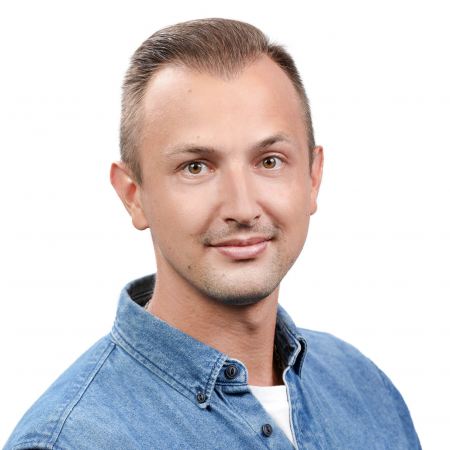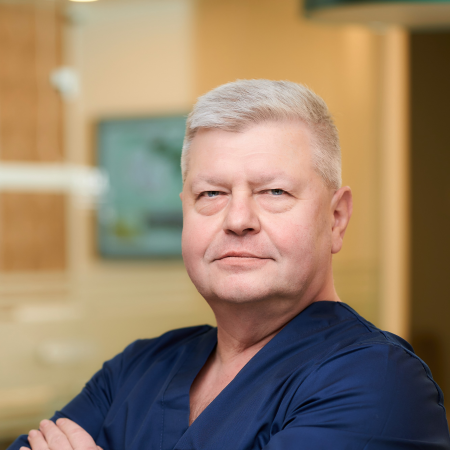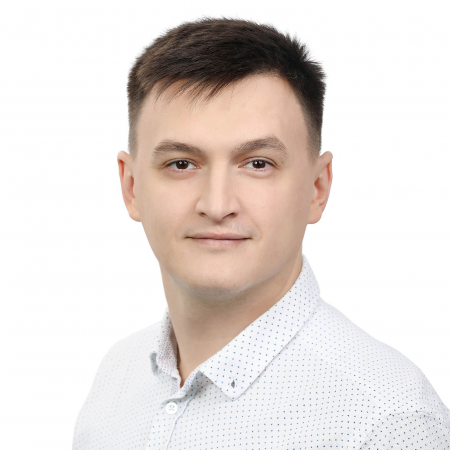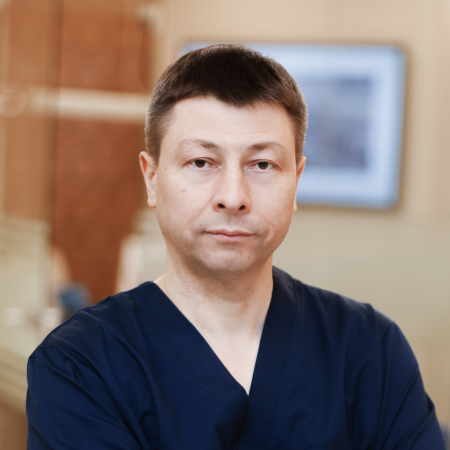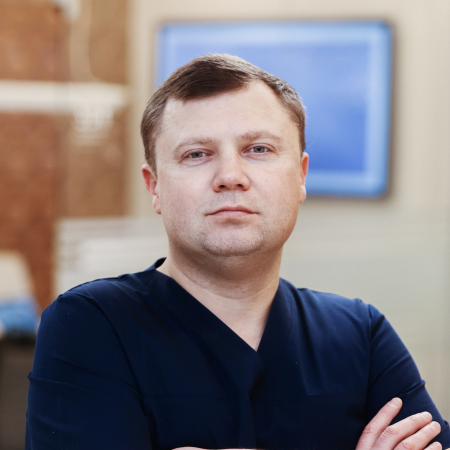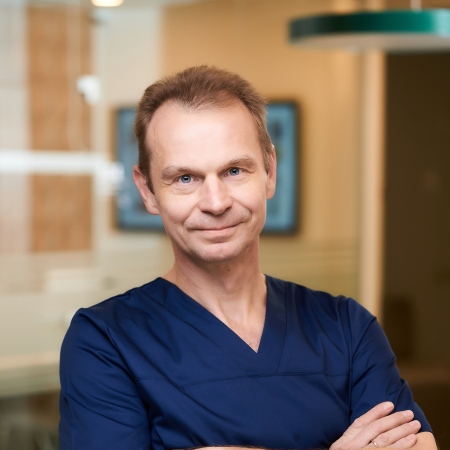Circular preputiotomy (Circumcision)
Circumcision
Circumcision - is a surgical procedure to remove the foreskin of the penis. There is a centuries-old practice of circumcision for religious reasons in the world. Today, this operation, along with religious reasons, is also carried out for aesthetic, hygienic, and medical reasons. Another purpose of circumcision of the foreskin is to correct the sensitivity of the receptor apparatus of the glans penis and, as a result, prevent premature ejaculation. This surgical intervention is performed in men of all ages: circumcision occurs in adults as well as in children and even newborns.
You can safely and professionally make circumcision in Kyiv in the Dobrobut network of clinics. Our specialists have many years of experience in successful operations in the field of urology and intimate plastics. By contacting us, you are guaranteed to receive a solution to the problem, a high European level of service, information support, and advice at all stages of treatment, and all this at affordable prices in comparison with prices in Ukraine. You can find out the cost of all our services on the website, or by calling our call center.
Indications for circumcision
- congenital or cicatricial phimosis, when, as a result of a severe narrowing of the foreskin, it is impossible to expose the head of the penis;
- paraphimosis, as a complication of phimosis, - infringement of the head by the foreskin;
- reducing balanitis, posthitis, and other inflammatory diseases of the head of the penis;
- lichen sclerosus;
- numerous genital warts in the foreskin;
- tears of the frenum of the foreskin as a result of intercourse.
In addition, circumcision has several advantages:
- Simplifies hygiene procedures: between the head of the penis and the foreskin, smegma accumulates - a healthy, physiological secretion of the sebaceous glands, which must be removed daily, otherwise, bacteria that contribute to inflammatory processes can develop in it. With circumcision, smegma accumulation is significantly reduced, which facilitates the process of hygiene.
- According to statistics, it leads to a decrease in the risk of developing urinary tract diseases and sexually transmitted infections. As a result, the incidence of penile cancer is reduced.
- Several studies have provided strong evidence that circumcision reduces the risk of HIV transmission to HIV-negative men by 50-60% through sex with HIV-positive women.
- It is worth emphasizing that circumcision does not affect fertility or sexual function.
Contraindications to circumcision may be:
- chronic inflammatory processes in the stage of exacerbation, affecting the genitals;
- discharge from the genital tract, indicating infectious diseases;
- the presence of neoplasms that require preliminary removal;
- anomalies in the development of the penis;
- violation of blood clotting;
- immunodeficiency states;
- somatic illness, high body temperature, etc.
Although circumcision is considered a fairly simple minimally invasive operation, it is not performed in some diseases and conditions. If a specialist finds contraindications, then the patient will first have to undergo a course of treatment to eliminate them.
Types of circumcision
The operation to circumcise the foreskin can be performed in several ways by the patient's age and health condition, desire, technologies used, etc.
The first step for all circumcision techniques is the retraction of the foreskin, followed by the separation of the adhesions (if any).
There are the following types of surgical intervention:
- Minimal circumcision - performed, as a rule, for medical reasons, with it, a small area of the foreskin is excised. After the operation, the foreskin still completely covers the head. The only drawback of this surgical intervention is the likelihood of re-formation of the scarring.
- Partial circumcision. It is also performed for medical reasons and consists of the removal of part of the foreskin. After such circumcision, in a calm state, the foreskin covers the head of the penis almost completely, leaving only the opening of the urethra open. In a state of erection, the head of the penis is completely exposed;
- Free circumcision. With this type of circumcision, the glans of the penis is almost completely exposed, part of the folds of the foreskin remains behind the glans of the penis and always closes the coronal groove, sometimes in a non-erect state, the head of the penis may remain partially covered by the remnants of the foreskin. During an erection, the rest of the foreskin is sufficient to avoid extreme skin tension. With free circumcision, the foreskin covers the coronal sulcus, and sometimes, in cold conditions, it can cover the base of the head of the penis.
- Moderate circumcision. This type of operation is also called middle circumcision. After this type of circumcision, the head of the penis always remains open. Sometimes in the area of the coronary groove, a fold of the foreskin may remain, but in diameter, it is always smaller than the diameter of the crown of the glans penis.
- Tight circumcision. It implies the removal of the foreskin completely or subtotally, while the skin stretches and becomes thinner during an erection, the head of the penis is constantly exposed. Produced at the request of the patient or for medical reasons.
How to prepare for surgery?
Before circumcision, it is necessary to undergo a consultation and examination with a urologist. As a rule, during the appointment, the specialist prescribes examinations and determines the presence of indications/contraindications. The list of preoperative studies usually includes a general blood test, urine, coagulogram, biochemical blood test, bacterial culture from the urethra, etc. The doctor prescribes additional examination methods individually, based on the characteristics of the clinical picture.
Two weeks before the operation, it is recommended to discontinue drugs that affect blood clotting. On the day of the procedure, you must carefully shave the hair in the pubic region and on the scrotum. When operating general anesthesia, you must arrive at the clinic on an empty stomach. Any, even the most insignificant, food intake is excluded since, during general anesthesia, this can lead to complications associated with the ingress of vomit into the respiratory tract.
Operation progress
Most often, the operation is performed under local anesthesia, but in some cases, general anesthesia is used.
During the operation, a part of the foreskin around the glans penis is excised, while the plastic of the frenum is performed at the same time. Then stitches are applied along the length of the cut. Usually, the special self-absorbable suture material is used, therefore, in the future, the patient is relieved of the procedure for removing the sutures. The duration of the surgical intervention takes about an hour. After the operation, the doctor gives detailed recommendations for the postoperative period. Rehabilitation lasts for two weeks, after this period you can have a sex life.
To sign up for a urologist's consultation in the Dobrobut network of medical clinics in Kyiv - call our call center at any time of the day. Entrust your health to professionals!
Bibliography
- Circumcision - American Urological Association. Published online, October 2018.
- Circumcision: Treatment, Risks, Benefits, Recovery. Published online, 23 January, 2021.
- Circumcision (male) - Mayo Clinic. Published online, 21 September, 2021.


